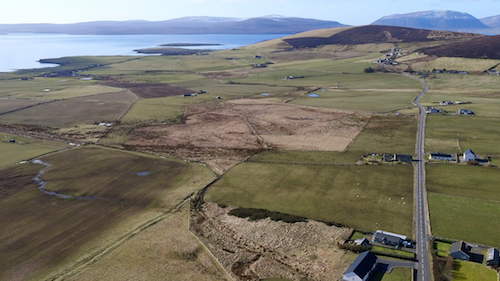

Ofgem proposes changes to SSEN’s transmission link plans
The Office of gas and electricity markets (Ofgem) has published its Needs Case consultation for Scottish and Southern Electricity Networks’ (SSEN) Orkney transmission reinforcement, proposing changes it says would save consumers money.
Ofgem, which is a non-ministerial government department and the economic energy regulator for Great Britain, has said SSEN’s plans, to build a 220MW high-voltage link to connect Orkney to mainland Scotland, do not do enough to protect consumers from the risks of paying for a link that is bigger than needed.
However, SSEN has welcomed recognition from Ofgem that there is need for the reinforcement, that 220MW reinforcement is the best option and that the link is deliverable.
The link, which is estimated to cost around £260m, would be completed in 2022 under current plans and would help new wind farms and tidal power projects on Orkney to send electricity to the rest of Great Britain.
All energy consumers pay for the cost of investment in new capacity, so the regulator ensures that it obtains the best deal possible for them.
SSEN submitted a final business case for the link in March this year. The company asked Ofgem to approve the project, under a condition that, by the end of 2019, there would be 70MW of generation capacity on Orkney committed to use the link once it is built.
However, Ofgem has made its approval subject to SSEN demonstrating that, by no later than December 2019, at least 135MW of new generation on Orkney has either been awarded a Contract for Difference (CfD) in the government’s 2019 CfD auction or has secured planning consent and finance to construct its project.
Meeting this increased generation target could prove challenging. This summer saw planning applications two large-scale wind farms, which would have contributed to this generation total, refused by Orkney Islands Council’s planning committee, following significant public opposition.
SSEN has said it “strongly disagrees” with 135MW of new generation being required, saying their figure of 70MW is based on industry best practice, which has been used to assess similar transmission investments across GB. SSEN has also said it is unclear why Ofgem is proposing a different test for Orkney, which it says conflicts with Ofgem’s own guidance on these types of transmission investments.
Ofgem also says it plans to reduce the cost to consumers of building the link by seeking to replicate the outcomes of competition by using the “Competition Proxy” model, where it will set the revenue that SSEN can earn from building and operating the Orkney link based on its experience in cutting the costs of connecting offshore wind farms to the grid by tendering the ownership of these links.
SSEN has stated concerns that the Competition Proxy model has still not been fully developed by Ofgem, rather than the well-established Strategic Wider Works model.
Ofgem has said it will make a decision on the business case for the link in spring next year and will confirm whether it will use the Competition Proxy model at the same time.
Speaking on Friday, following the publication of Ofgem’s Needs Case consultation publication, David Gardner, SSEN’s director of transmission, said the recognition that the connection is needed is “a crucial step forward”, adding: “Whilst there are still several obstacles to overcome, having got this far it is important we don’t miss this opportunity to unlock Orkney’s vast renewables potential.
“We will therefore continue to work in close consultation with our generation customers and wider stakeholders to address the key points raised by Ofgem in its consultation.”
Ofgem has separately published a consultation on SSEN’s “Alternative Approach for Orkney” policy proposal, designed to overcome the barriers to connection faced by SSEN’s generation customers on Orkney.
Orkney MSP, Liam McArthur welcomed Ofgem’s consultation but said there is still work to do to ensure SSEN’s proposals meet the needs and reflect the concerns of the local community.
Aside from a transmission subsea cable from Orkney to Caithness, SSEN’s transmission reinforcement project, which, in one form or another, would stretch around most of the Orkney mainland and some of the south isles, would consist of:
- a major substation near Finstown,
- an underground cable from Finstown to the subsea cable landing point at Warbeth,
- onshore infrastructure – such as pylons and overhead cables – connecting renewable developers to the Finstown substation.
More information on SSEN’s Orkney Transmission Reinforcement project can be found at company’s website, here.
For more on this story, see next Thursday’s edition of The Orcadian.
